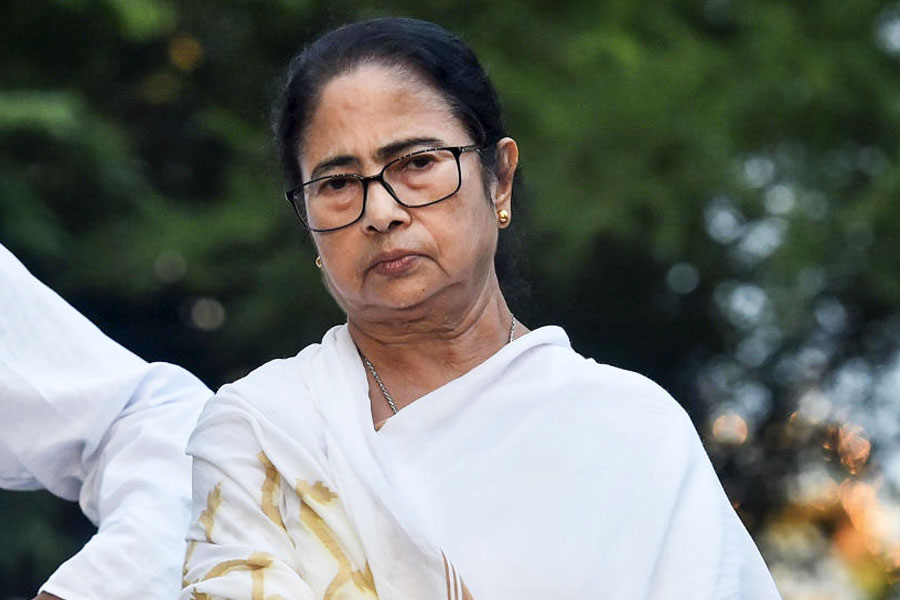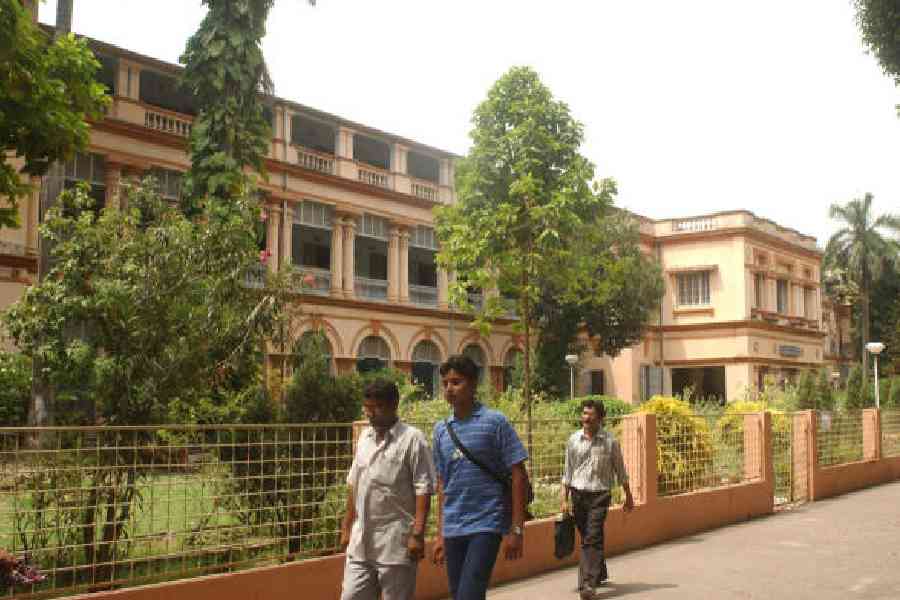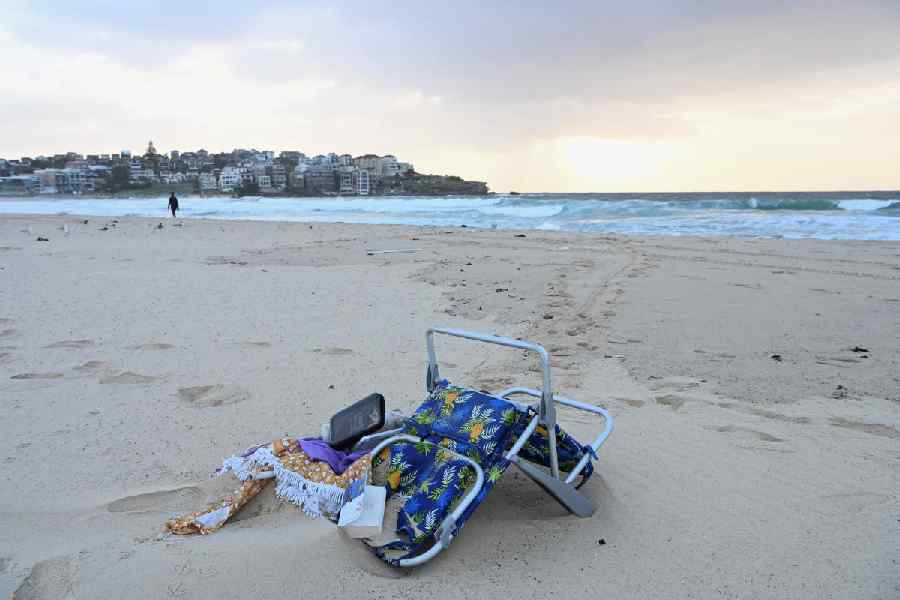 |
For animation film-maker Prodipto Roy, weekends are not what they used to be. As Calcutta decks up to party, Roy signs out of his studio to zip 180-odd kilometres, largely down National Highway 2, to visit his mother in his hometown, Santiniketan. The journey that once took two-and-a-half hours is now done in about half that time. “Driving home is so much more fun nowadays,” says Roy.
 |
Roy is not the only person enjoying the fruits of the decade-long National Highways Development Project (NHDP) that is fast nearing completion. On the other side of the economic rainbow, at an eatery along National Highway 8 linking Delhi to Jaipur, two village kids are biting as much off the roadways pie as Roy. Dressed in traditional Rajasthani attire, the duo welcomes travellers who stop by at the restaurant for a quick meal, by breaking into a rustic folk song and a little jig. “We make about Rs 200 every day during the tourist season in tips,” their mother says.
 |
A good road, as they say, changes everything. And if current developments are an indication, the NHDP is poised to do just that at a nationwide level. “Come 2009, and India will boast about 14,000 km of quality highways spanning its entire length and breadth,” says A.V. Sinha, member (technical), National Highways Authority of India (NHAI).
Sinha, of course, is talking about the network of road corridors being laid out across India, comprising the Golden Quadrilateral (GQ) and the North-South (NS) and East-West (EW) Corridors. The modern Indian highway will have pothole-free lanes, clear signage, accident back-up systems and roadside civic amenities.
But more importantly, the sundry benefits of the road network have started to percolate down to people. Corporate executive Pranav Arora, given to travelling long distances out of the city on work, is one of the beneficiaries. “Travelling conditions have improved radically, and travelling time has decreased,” says Arora.
Figures provided by the NHAI show that road traffic on Indian highways, now pegged at 25,000 passenger car units per day, has been increasing by more than 10 per cent over the past five years, ever since stretches of the GQ began to be put in place. That is good news for the thousands of people living in villages and towns that dot the country’s highways. For them, the roads have brought along unprecedented economic opportunities.
Local entrepreneurship, for starters, is on the upswing. New eateries are mushrooming to cater to the needs of travellers, and several older ones are going in for a revamp to attract more clients.
The proprietors of Star Hotel — it was called Star Dhaba until last year — on the Jaipur bypass say they went in for a renovation recently to give their eatery a trendier look. “Business is much better now,” says the man at the desk. “Our tables are seldom vacant.”
Close on the heels of business ventures are job prospects, in projects associated either directly or indirectly with the NHDP. On the 90-km-long Kishangarh expressway linking Ajmer to Jaipur, for example, about 500 people from nearby villages have been employed by GVK International, the company that constructed the expressway and now maintains it.
“There’s a lot of maintenance and operational work along the stretch, and when recruiting people for those posts, we decided to stick to the locals,” says Ashwini Sharma, DGM, maintenance, GVK. Villagers have found jobs as maintenance personnel in parking lay-bys, public toilets, and as semi-skilled workers in other streams such as ambulance, crane and fire services.
Another field in which jobs have come calling is construction. Real estate developers are building roadside townships meant for city dwellers on the lookout for a country home. “Good roads mean people can drive long distances to work every day,” points out Deepali Singh, business head of property portal 99acres.com. “For people on a low budget, for whom city homes are too expensive, townships along the highway have become an ideal homing option,” she adds.
In Dharuhera, about 70 km from Delhi on the Jaipur-bound NH 8, construction giants Parsvnath Developers are setting up a township. “The project has some 300 to 400 residential plots, selling for about Rs 14,000 per square yard, a third of the going rate in Delhi or Gurgaon,” says Swetha, manager, corporate marketing, Parsvnath Builders. “We’ve sold almost 60 per cent of the plots already,” she adds.
As far as jobs for the locals in these projects are concerned, Ansal Housing, another real estate giant, gives a few figures. On the outskirts of Agra along NH 3 of the NS Corridor, Ansal Housing has just finished work on sample houses for their 130-acre residential township, Ansal Town. “For construction, we’re hiring local people from nearby villages,” says Sharad Mishra, advertisement manager, Ansal Housing. Even after completion, the township would require enormous manpower for maintenance and security. And that, says Mishra, would come from the neighbouring region as well.
While villagers may be making their money, motorists, too, are getting every drop of fuel’s worth while zipping down the highway. The fledgling retail sector along the arms of the GQ is making sure that travellers in future can leave home without so much as a toothbrush in their pockets.
Reliance Industries leads the pack here, with their string of state-of-the-art gas stations and A1 Plazas dotting all major national highways. Conceived as multi-purpose convenience centres, these pit-stops cater to all relevant needs of travellers, ranging from safe parking to hygienic food, showers and toilets and entertainment.
Coffee-shop chain Café Coffee Day (CCD) has followed suit in bringing the highway traveller his desired cuppa in between long sessions at the steering wheel. Two CCD cafés are already doing brisk business along NH 8, along with a couple more in Hindustan Petroleum and Bharat Petroleum gas stations along the highway. “Our highway cafés have as many as 500 people walking in daily, which is as good as our city cafés,” says Simran Sablok, general manager, marketing, CCD. The company plans to add around 15 more cafés along highways through 2007, she says.
Those in the hospitality business have swung into action as well. In 2003, luxury hotel brand Le Meridien took advantage of the connectivity provided by National Highway 8 to come up with a 96-room and 20-villa resort about 25 km from Jaipur. “People now come to our hotel because it offers them a more scenic environment compared to the city centre,” says Praful Narchal, assistant sales manager, Le Meridien, Jaipur. “Through the tourist season, we have around 96 per cent occupancy, compared to 80 per cent that other hotels register in the city,” he adds.
There is, however, a flip side to the boom. There is some concern about whether today’s four-lane highways would provide enough corridor space for burgeoning traffic in the future. The Delhi-based Indian Foundation of Transport, Research and Training (IFTRT) say that nearly 45 per cent of cargo in India is currently carried through its national highways. “Roadways carry about 80 per cent of the entire freight that moves in India,” says S.P. Singh, coordinator, IFTRT.
To tackle the problem of congestion, the NHAI has already commissioned new projects for the six-laning of 5,700 km of the GQ, apart from an additional 800 km of other high-density highways.
However, experts are worried that land acquisition for the extra lanes may become a major problem in the days to come. “It’s always been a problem,” says K.L. Thapar, chairman of the Delhi-based organisation Asian Institute of Transport Development. “The shortage of funds limits our authorities to implementing projects on a small scale, and when there’s a need to expand, problems such as obtaining land rights invariably crop up.”
NHAI’s Sinha insists there’s no need to worry, as of now. “We’re doing fine, and we’ll definitely be so for another 15 or 20 years. Then, if traffic congestion does become a problem, we’ll have to find a way around it,” he says.
Till, then, though, life is one smooth drive.
Highway hope
Commissioned in 1999 at a cost of Rs 54,000 crore
Plan
![]() A Golden Quadrilateral connecting Delhi, Calcutta, Chennai and Mumbai
A Golden Quadrilateral connecting Delhi, Calcutta, Chennai and Mumbai
![]() An East-West corridor connecting Agartala and Porbandar
An East-West corridor connecting Agartala and Porbandar
![]() A North-South corridor connecting Srinagar and Kanyakumari
A North-South corridor connecting Srinagar and Kanyakumari
![]() Upgrading of 10,000 km of high density corridors (cost Rs 55,000 crore)
Upgrading of 10,000 km of high density corridors (cost Rs 55,000 crore)
Status report
Delhi-Mumbai stretch complete; Delhi-Calcutta stretch nearly done; 95% of the other corridors complete










